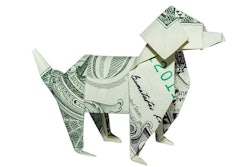
While the 2020 Alltech Global Feed Survey revealed an overall decline of 1.07% in global animal feed production overall in 2019, pet food production increased by 4% worldwide. African pet food production experienced the largest growth rate in 2019 compared to other regions, although overall volume was still lower than most other parts of the world. African manufacturers created 0.4 million metric tons of pet food in 2019.
Following Africa in growth rate while dwarfing its volume, pet food companies in the Asia-Pacific region increased production by 10% to make 3.1 million metric tons of dog, cat and other pet foods.
Latin American pet food companies produced a larger volume of product than Asia-Pacific facilities, at 6 million metric tons. Cat, dog and other pet food producers’ volume grew by 7% in Latin America.
Europe and North America topped pet food production volume with 8.8 million metric tons each. However, growth was slower than much of the rest of the world. European pet food production volume increased by 3%, while North America did not increase at all.
Likewise, Oceania and the Middle East didn’t increase their pet food production volume in 2019. Oceania produced 0.5 million metric tons, while the Middle East produced .1 million metric tons.
On a smaller scale than regions, China, Indonesia, Portugal, Hungary, Ecuador and Argentina most increased pet food production volume compared to other nations.
The 2020 Alltech Global Feed Survey collected data from 145 countries and nearly 30,000 feed mills.
Pet food consumer demand trends and other influences in 2019
Alltech’s survey also asked qualitative questions about consumer demands. In Europe, animal welfare and climate change concerns influenced consumers to move towards vegetarian and vegan lifestyles. In Latin America, concerns about genetically modified organisms and antibiotics drove an interest in food sourcing.
In the United States and China, the trade war broke U.S. export trade routes to China. Alltech’s analysts expressed uncertainty about how many of their routes could be restored. Meanwhile, European and Latin American feed producers took advantage of the opportunity to gain ground in China.


















